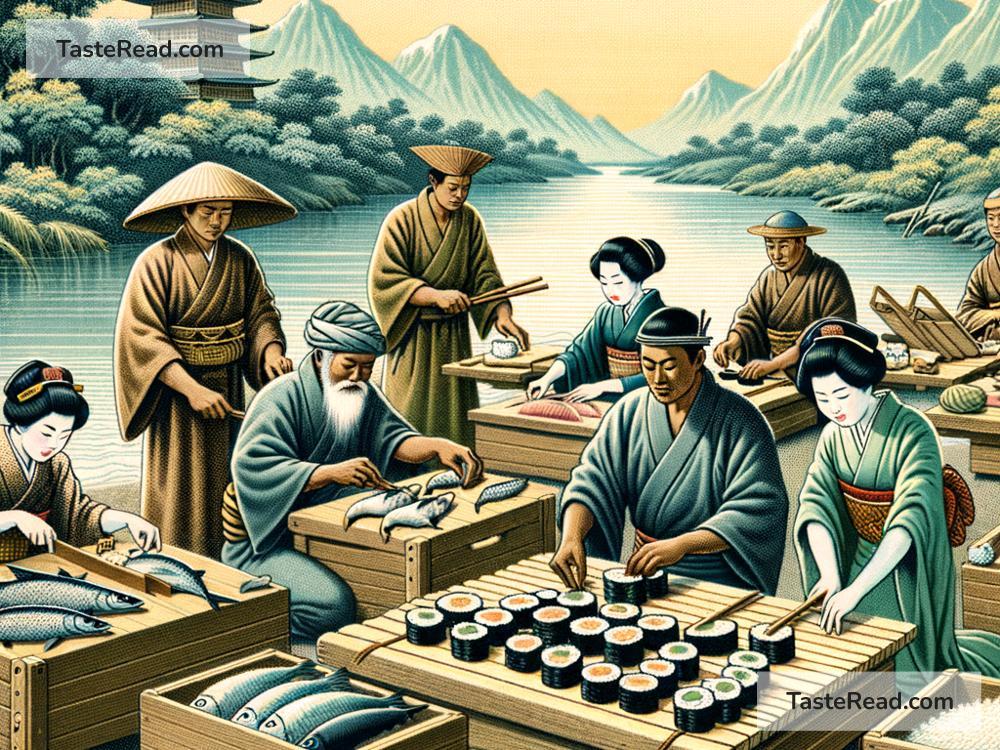The Origins of the First Sushi Roll: Ancient Tales Told Simply
Sushi is one of the most beloved foods around the world today. From its fresh fish to sticky rice, wrapped neatly in seaweed, sushi rolls come in all shapes and sizes. But have you ever wondered where the idea for the first sushi roll came from? The story of sushi is older than many people think, and its journey to becoming the modern dish we all enjoy is one filled with creativity, resourcefulness, and tradition. Let’s dive into the fascinating origins of sushi rolls, and explore the ancient tales that may have inspired them.
What Is Sushi?
Before we talk about its history, let’s quickly explain what sushi is. Sushi is a type of Japanese food that usually consists of vinegared rice paired with fish, vegetables, or other ingredients. Many people mistakenly believe sushi always involves raw fish, but this is not true. Sushi is about how the rice is prepared, and the toppings can be cooked or raw, depending on the style.
Sushi has many forms, two of the most popular being sushi rolls (called makizushi in Japanese) and raw pieces of fish over rice (called nigirizushi). Makizushi, the rolled sushi, is wrapped with a sheet of seaweed (nori) or other materials like cucumber or omelet. This rolled style is the focus of our story today.
The Very Old Beginnings: Fermented Origins
The roots of sushi go back over a thousand years. Sushi started in Asia as a way to preserve fish. Long before refrigeration existed, people needed a reliable method to store their food. Thus, they developed a process called narezushi, where fish was packed in fermented rice to keep it edible for months. The rice absorbed moisture and acted as a preservative, drawing out the bad smells and protecting the fish from spoiling.
Believe it or not, during this early period, people ate the fish but threw away the rice! The rice was just there to serve as the storage medium, not part of the meal itself. This style of sushi is completely different from what we think of today.
From Fermented to Fresh
Over time, around the 8th century, narezushi transformed into something new. People started eating both the fish and the rice together. The fermentation process was shortened, making the rice taste tangy instead of overwhelmingly sour. This creation marked the beginning of a dish more closely resembling modern sushi.
Centuries later, in the Edo period (1603–1868) of Japan, sushi experienced its next big leap. Instead of fermenting, people started using fresh fish and adding vinegar directly to the rice for flavor. Vinegar sped up the process and eliminated the wait time needed for fermentation. This method became the foundation of the sushi we know today.
The Birth of Sushi Rolls: Ancient Tales and Creative Innovation
While sushi itself has a long history, sushi rolls didn’t appear right away. Many historians believe that rolled sushi—what we call makizushi—likely emerged between the late Edo period and the early 19th century. But who came up with the idea to roll sushi into cylinders? To uncover the story, we must look to ancient tales and traditional practices.
One popular story involves the use of nori, the dried seaweed that’s central to makizushi today. Ancient Japanese people realized that seaweed sheets were perfect for wrapping food. They were lightweight, nutritious, and easy to shape. According to legend, farmers and travelers used nori to wrap their rice and fish for convenience, creating something like a portable lunchbox. This practice was both practical and delicious, and it eventually inspired more formal sushi rolls.
There is also a tale about Japanese chefs in Edo (modern Tokyo). They sought new ways to serve sushi, experimenting with different presentations to delight their customers. It’s said that one innovative chef layered seasoned rice and fish, then carefully rolled it inside nori. When sliced into bite-sized pieces, the dish looked beautiful and was easy to eat—and so, the sushi roll was born.
Another ancient story goes even further back and suggests the act of rolling food may have been inspired by temari sushi—a colorful ball-shaped sushi made for festive occasions—or by onigiri, rice balls wrapped in seaweed in more casual settings. Bringing together the fun presentation of temari and the portability of onigiri could be what eventually evolved into makizushi.
How Sushi Rolls Spread Around the World
Sushi rolls grew in popularity in Japan, and many regional varieties developed over time. Some were thicker, like futomaki, while others were slimmer, like hosomaki. Creative fillings included vegetables, pickles, and seafood, catering to diverse tastes.
In the 20th century, sushi rolls exploded onto the global stage, especially in the United States. Chefs began experimenting with new ingredients like avocado, cream cheese, and mayonnaise to create fusion rolls. The California roll, a sushi roll invented in America, helped sushi win over Western audiences. Today, sushi rolls are a staple of international cuisine, with endless variations enjoyed by millions.
Conclusion
The first sushi roll didn’t come out of nowhere—it was the product of centuries of evolution, creativity, and ancient traditions. Starting from fermented fish in rice and growing into portable rolls wrapped in nori, sushi rolls show how food can reflect the needs and imagination of the people making it. Whether inspired by practical farmers, creative chefs, or festive traditions, sushi rolls have come a long way to become the symbol of Japanese cuisine that we adore.
Now, the next time you enjoy your favorite roll—whether it’s spicy tuna, salmon avocado, or vegetable futomaki—you’ll know that a long, fascinating history lies behind each bite.


